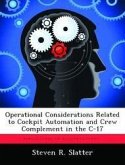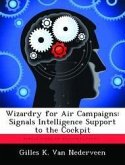Intent information provides knowledge of another aircraft's current and future trajectory states. Prototype traffic displays were designed for four different levels of intent: Position, Rate, Commanded State, and FMS (Flight Management System)-Path. The current TCAS (traffic collision avoidance systems) Display, which shows altitude rate in addition to current position and altitude, was used as a baseline and represents the lowest level of intent. The Rate, Commanded State, and FMS-Path Displays show increasing levels of intent information using TCAS-like symbology in addition to incorporating a conflict probe and profile view display. An initial experiment was run on the MIT (Massachusetts Institute of Technology) Part Task Flight Simulator in which eight airline pilots flew five traffic scenarios with each of the four displays. Results show that pilots had fewer separation violations and maneuvered earlier with the three intent displays. Separation violations were reduced when pilots maneuvered earlier. A second experiment was run to compare performance between displaying intent information directly and incorporating it into a conflict probe. A different set of eight airline pilots flew four traffic scenarios with the TCAS and Commanded State Displays with and without the conflict probe. Conflict probes with two minute and long range look-ahead times were tested. Displaying conflict bands or showing intent information directly both led to fewer separation violations and earlier avoidance maneuvers than the base TCAS Display. Performance was similar between the two minute and long range look-ahead conflict probes. Pilots preferred all intent displays over the TCAS Display.
Hinweis: Dieser Artikel kann nur an eine deutsche Lieferadresse ausgeliefert werden.
Hinweis: Dieser Artikel kann nur an eine deutsche Lieferadresse ausgeliefert werden.








